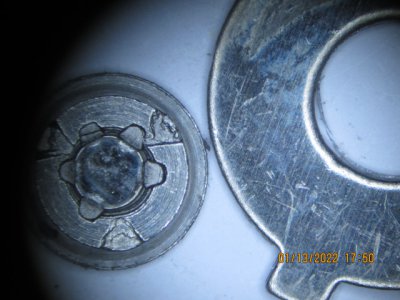There are three outer peenings (swagings?) that held the source into the contact ring.
There are 5 pressings to hold the source onto the inner carrier, looking as if missing a sixth.
That part is small enough that you will be able to put them lots closer, and have a more intense irradiation, and bigger counts.
On mine, the 3 peenings to the contact ring were so pressed over, they were never going to just bend away. I also tried a blade. In the end, I just carefully filed the overhang on them away, to make it possible to pop them free of the contact carrier. At the time, my fooling with a blade (Swann-Morton 25) had it snap, and things slipped, and there was blood!

Also, it took a major tidy-up to find where the Am241 source ended up (floor)!
I am thinking that with the close-up design, maybe you don't need all eight of them. Maybe six is enough.
---------
I am now getting back to my amplifier and ADC. I am disappointed that the (powerful) little Raspberry Pi Zero 2W is just sold out from all outlets until April. I can use my Pi4 for development, but the £11.50 board has it's attractions. It has the grunt to do the computing, drive it's own display, or do Wi-Fi, or Bluetooth, or USB to a computer or a smartphone.
Your tiny, tiny $15 computer
www.raspberrypi.com
It seems all Pis have been in shortage since back in 2020, and now, despite making millions of them, the Raspberry Pi Zero 2W is almost always sold out. It's not just about supply chain holdups. It's basically driven by ever expanding demand.




